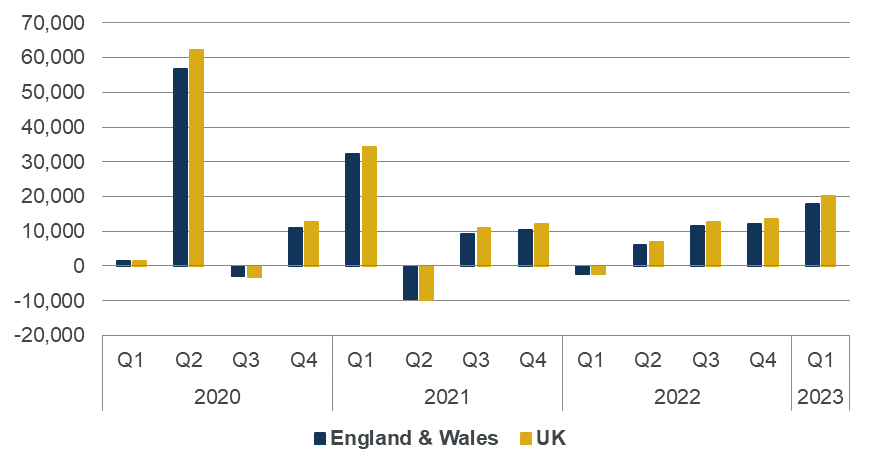 Cobus Daneel, Chair of the CMI Mortality Projections Committee, reviews the CMI’s mortality analysis for the first quarter of 2023.
Cobus Daneel, Chair of the CMI Mortality Projections Committee, reviews the CMI’s mortality analysis for the first quarter of 2023.
The Continuous Mortality Investigation (CMI) has been publishing frequent updates on mortality in the general population during the pandemic. This blog focuses on mortality in the general population in the first quarter of 2023.
To consider the impact of the pandemic on mortality, the CMI calculates age-standardised mortality rates (ASMRs), which remove the impact of changes in the population to provide a fairer comparison between years. It calculates ‘excess mortality’ for a period as the difference between the actual ASMR and the ASMR for the corresponding period in 2019, the last full year before the pandemic had an impact on mortality.
Mortality for the general population of England and Wales was 13% higher in 2020, 7% higher in 2021 and 4.5% higher in 2022 than in 2019.
Mortality in the first quarter of 2023 was also higher than in 2019. This was primarily driven by high levels of mortality at the start of 2023 and again in March. Mortality in the first quarter is often volatile, due to varying impacts of influenza and temperature, but the first quarter of 2023 was the fourth successive quarter with excess mortality, as shown in the following chart of excess deaths. It was also the worst quarter for excess mortality since the first quarter of 2021 (which was affected by the second wave of the pandemic).

While there continues to be a significant number of deaths with Covid on the death certificate, averaging 600 a week during the first quarter in England and Wales, more than half of the excess was due to other causes.
It is uncertain how mortality will develop over the remainder of 2023. If mortality in the remaining three quarters of 2023 is similar to 2019, then mortality for 2023 as a whole will be around 3% higher than 2019, continuing year-on-year reductions in mortality since 2020. But if excess mortality for the rest of 2023 is similar to the first quarter, mortality could be around 13% higher than 2019, similar to what was seen in 2020 – the peak pandemic year.
Our calculations do not take account of the 2021 census in England and Wales, as updated data is due to be published by the ONS in May 2023. Our previous blog discusses the implications of the initial census results.